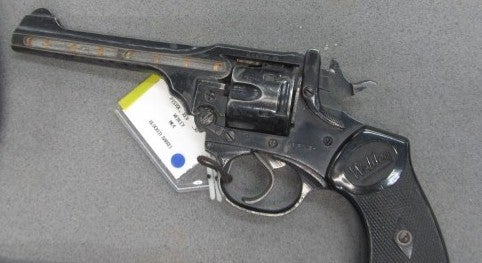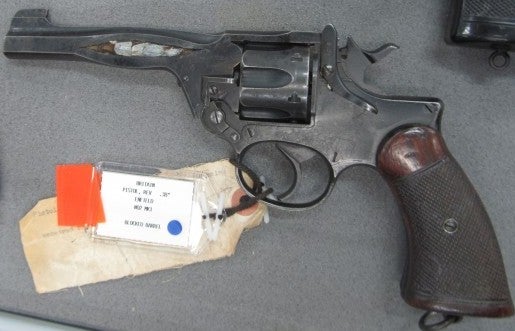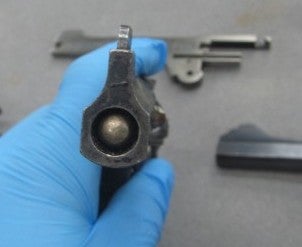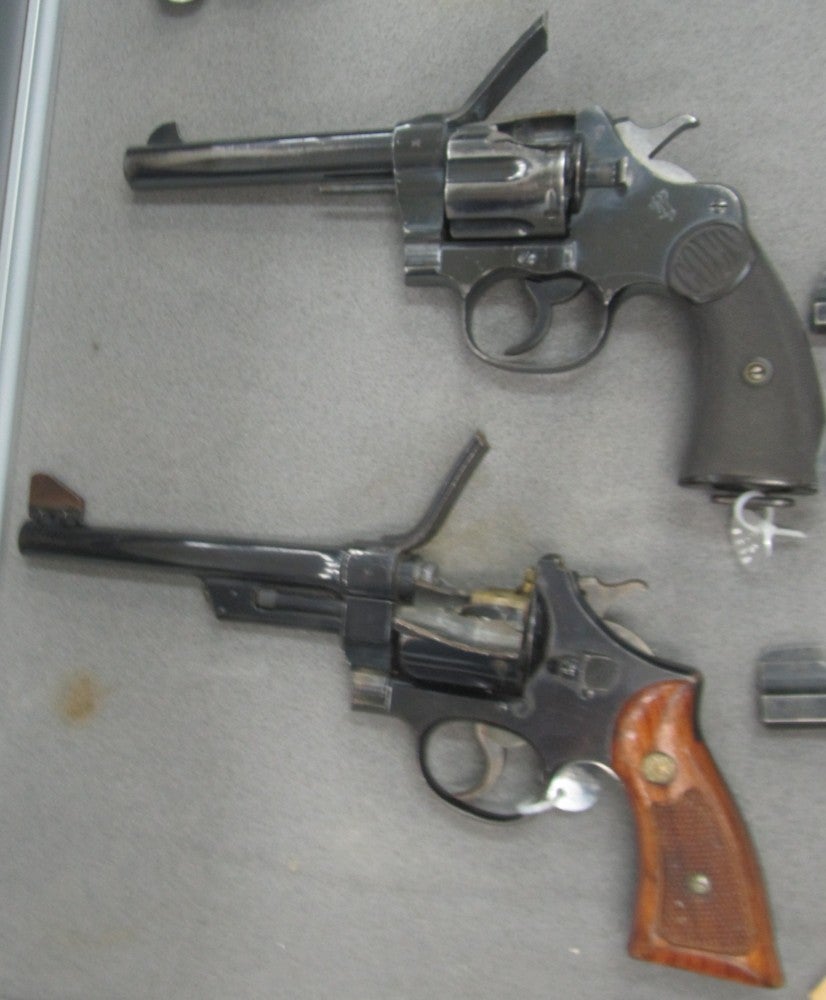The British Ministry of Defense National Firearms Centre is a national archive of small arms and is possibly the most extensive working reference collection in the world. Originally located at the Royal Small Arms Factory in Enfield, it was later moved to Nottingham in 1989. After another relocation from Nottingham, it is currently a part of the Royal Armouries which are located in Leeds. While conducting research in the NFC, there were a number of revolvers on display which had suffered an array of malfunctions.
The first two revolvers are Webley Mark IV .38/200s that have been turned into cutaways to demonstrate the rounds that have piled up on top of each other. These were probably carried out by ordnance officers to examine the effects of what under pressured rounds would do to a revolver.
In the case of this Enfield No. 2 revolver, it seems to have been negligence that caused the bullet pile up, or one too many “audible pops” at a range if it had been a different weapon. The armory tag is dated 1955 and the location given as a town in continental Europe. It was probably shot during a service qualification and the shooter didn’t realize he wasn’t impacting any targets. Although this act is conceivably laughable, it is certainly dangerous and a constant reminder of why the military is sometimes insistent on bore checks before conducting range activities. In the book The Rifle Story by John Walter, the author writes about a recovered muzzle loading rifle that was found after the Battle of Gettysburg that had been loaded over 15 times. The initial patch and minie ball that had been loaded failed to fire, thus every minie ball and patch that was loaded afterwards also did not go off. An explanation for this is that due to the noise of the battle all around that particular soldier, he couldn’t distinguish his own rifle discharging from those around him. A similar situation must have happened with this revolver’s shooter. The rounds were going off, he must have heard the discharge from the cylinder, but didn’t confirm that his shots were translating into impacts.
The top revolver is a Colt Model of 1917 in .45 ACP, bottom revolver is a Smith & Wesson .38 with a 7 inch barrel. Both appear to have suffered catastrophic failures within the cylinder itself, also inside the cartridges. The Colt appears to have exploded a little bit earlier during the ignition of the gun powder than the Smith & Wesson, which if readers will look at closely, appears to have a target front sight, which could mean hand loads from an experimental target shooter. The author would even go as far as to say a sympathetic detonation occurred in the cartridges in the chambers on either side of the Smith & Wesson because the cylinder is literally cut in half. One only hopes that both shooters had some sort of eye protection on.
All photos taken by Miles Vining, courtesy of the Trustees of the Royal Armouries, Leeds, England.
 Your Privacy Choices
Your Privacy Choices




